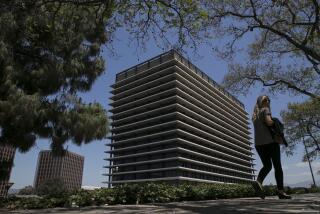A Conservation Boomerang: We Must Pay More : Water: Frugal L.A. users put less money in DWP coffers, imperiling maintenance budget.
- Share via
Los Angeles residents are to be applauded for their stellar conservation efforts in the face of one of the longest and worst droughts in California’s history. When the Department of Water and Power enacted a mandatory water-rationing program early this year, its goal was a 15% reduction in usage. The public surpassed this level by an additional 15% over the past 11 months.
Unfortunately, the public’s enthusiastic response fueled another equally threatening and critical situation. Simply stated, the additional 15% reduction in water usage citywide translates into nearly a $70-million loss of revenue for the DWP. Without that revenue, the ability to maintain and improve the vital network of aqueducts, reservoirs, pumping stations, a state-of-the-art filtration plant and thousands of miles of pipe is in grave jeopardy.
The cost to operate this system is relatively constant, whether we transport 2 billion gallons of water a year or 22 billion. So, while the amount of water piped to the city this year has been reduced 30%, the cost to bring it has stayed the same.
The DWP has taken serious steps to offset this loss of revenue--a $45-million cut in its budget, a hard hiring freeze and postponement of all but the most essential capital-improvement programs. Even with these cuts, however, the harsh reality is that the water system infrastructure will suffer irreparable damage if funds are not available for necessary upkeep.
It is with these critical issues in mind that the DWP has proposed an increase in water rates. This has been met with harsh criticism from members of the City Council, homeowner groups and especially from residents who have reduced their water use. A rate increase, however, should be viewed not as a penalty to conscientious residents, but as a fiscally responsible solution to an impending citywide crisis.
A rate increase would add only a few cents per month to the average resident’s water bill. Because of reduced consumption, the DWP has had to purchase less water from the Metropolitan Water District. Lower purchased-water costs will offset any rate increase for capital improvements, resulting in a minimal increase in the total average water bill.
In an uncertain economy, increased costs--however small--for any city service are understandably undesirable. The question is, do we invest a few pennies now to maintain a suitable level and quality of service, or do we spend substantially more in the future to rebuild a system that has deteriorated because of neglect?
More to Read
Sign up for Essential California
The most important California stories and recommendations in your inbox every morning.
You may occasionally receive promotional content from the Los Angeles Times.













